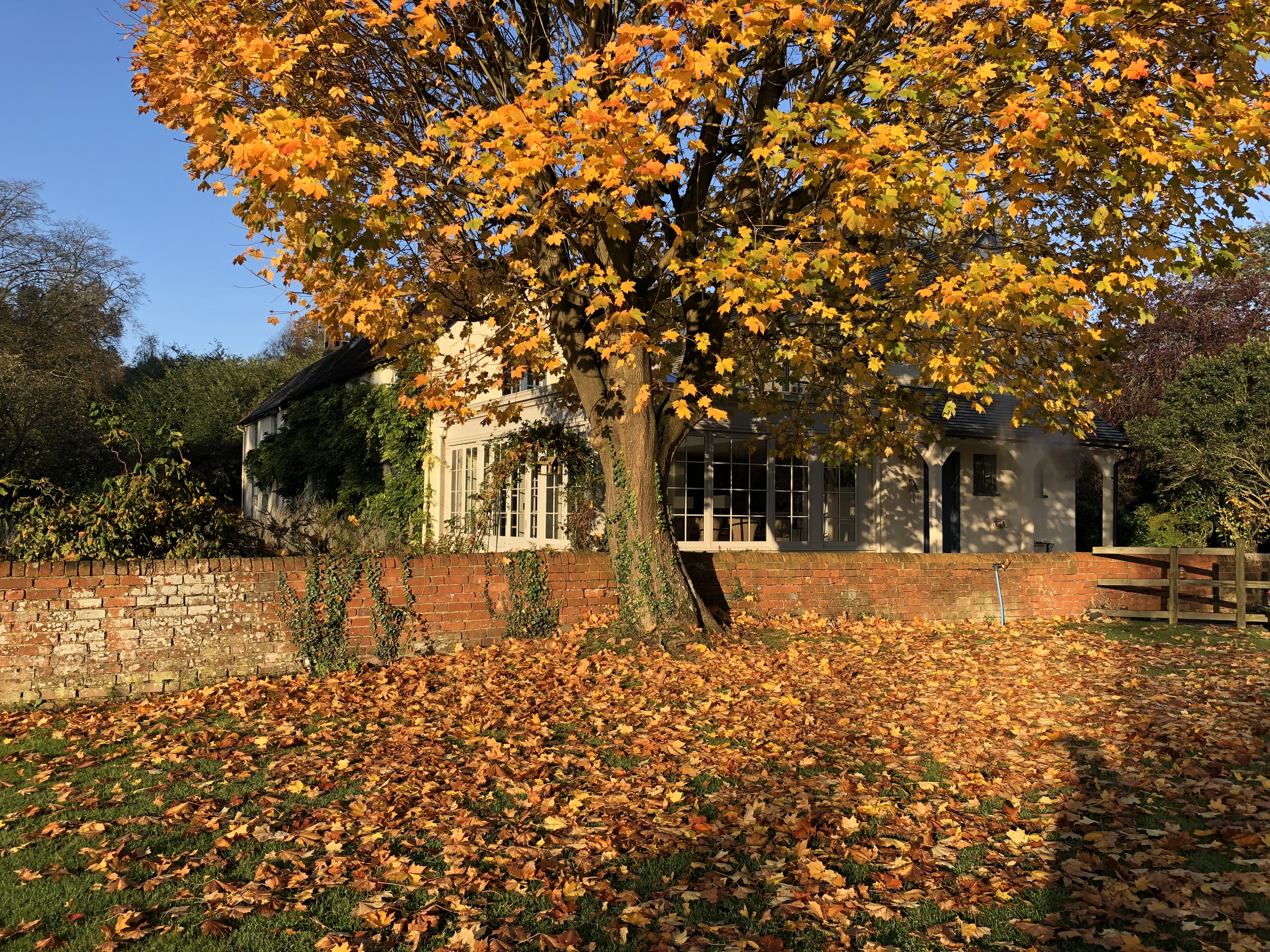It’s a beautiful time of year, with the trees changing colour but it’s also time to start preparing for early frosts as November approaches.
Book your autumn garden tidy with us <find out more>
Jobs for October:
1. Plant new trees and hedges
2. Clear up fallen autumn leaves regularly
3. Cut back and or divide herbaceous perennials
4. Move tender plants, including aquatic ones, into the greenhouse
5. Harvest apples, pears, grapes and nuts
6. Prune climbing roses
7. Last chance to mow lawns unless it stays mild
8. Trim hedges
9. Renovate lawns or create new grass areas by laying turf
10. Continue to plant spring-flowering bulbs.
Jobs for November:
- Plant shrubs, trees and hedging to fill gaps
- Take advantage of the cheaper bare root and root-balled season from November through to March <find out more>
- Drain down irrigation systems for the winter. Prevent frost damage by taking timers and double/triple taps indoors, draining valves and pipework and remember to switch off the mains water supplies to the systems.
- Plan to turn off small self-contained water features and lift the pump from the water to wrap for protection from damaging frost.
- Clear up fallen leaves – especially from lawns, ponds and beds
- Raise containers onto pot feet to prevent water-logging
- Divide congested herbaceous perennials and redistribute to fill any gaps
- Plant tulip bulbs for a spring display next year
- Prune roses to prevent wind-rock
- Insulate outdoor containers from frost – bubblewrap works well
- Protect any exotic plants you have
- Put out bird food to encourage winter birds into the garden
- Create a refuge for wildlife over winter in your garden
Planting
October and November are an ideal time for moving and planting trees, shrubs and climbers, as well as for hedge planting.
Bare-rooted deciduous hedging and some trees and shrubs become available towards the end of the month. They are cheaper than containerised plants, and are the perfect choice whenever large numbers are needed but you can still use containerised trees and shrubs, and large semi-mature specimens, for planting over the winter.
For more information on field grown hedging <click here>
Pruning, training and dividing
- Last chance to trim deciduous hedges to keep them looking tidy over the winter.
- Prune bush roses now, if not done already, as reducing their height will prevent wind rock. These plants are generally shallow-rooted and can become loose in the soil if buffeted by strong winds.
- Climbing roses should be pruned now if not done last month.
- Shrubs normally pruned hard in the spring such as Buddleja davidii, Cornus alba, and Lavatera, can be cut back by half now, to prevent wind rock and to neaten their appearance.
- Cut back faded herbaceous perennials and add to compost heap
- Lift and divide overcrowded herbaceous plants.Now is also good time to plant new herbaceous perennials, as the soil is still warm, but moister than it was during the summer.
General Maintenance
• Raise patio containers on to bricks or purpose-made pot feet to avoid them sitting in water during the winter.
• Make sure you have finished bringing all tender plants into the heated greenhouse or conservatory for the winter.
• Check tree stakes and ties
• Rake fallen leaves off lawns before they block out light and air penetration to the grass. On large lawns a leaf-blower will make the job much easier, but only powerful models are capable of shifting leaves from damp lawns.
• Consider building a post and chicken wire leaf pen for autumn leaves. They turn into leafmould – very useful as a soil improver or as an ingredient in potting composts.
Lawns
• In many colder areas, this month is the last opportunity to scarify, aerate and top dress lawns. Scarification removes layers of thatch and can be done with either a spring-tine rake or a powered scarifier.
• Afterwards apply an autumn lawn feed; these are low in nitrogen, so discouraging lush green growth that would only succumb to cold and diseases over the winter months.
• This is definitely your last chance to sow grass seed in mild areas of the UK. Cover newly sown areas with clear polythene to protect them from cold or fierce rain, if these are forecast in your area. Light to moderate rain will aid germination.
• This is the last chance to mow recently sown grass areas, to neaten them up before the winter. Don’t cut lower than 2.5cm (1in). Topping with the mower will also prevent weeds getting out of hand.
• Toadstools and fairy rings appearing in the lawn may be a sign that scarification and autumn lawn care is necessary.
• To assist walking over lawns plagued with worm casts or muddy areas, consider laying a gravel, mulch or paved path.
Ponds
• Continue to place nets over small ponds to prevent autumn leaves falling in.
• Rescue tender water plants and remove any dying foliage. Place the plants in trays of deep mud or damp sand, or even in a bucket of water, keeping them in a frost-free place such as a conservatory or greenhouse, until the risk of frost has passed.
• If you did not tidy up the pond last month, then clear out any debris, weeds, and excess oxygenating plants now, leaving them on the side for 38 hours before composting them, so that wildlife has time to escape back to the pond.
• Remove pumps or fountains and removable lighting systems, clean them, and store over winter in a safe place.
• If there is any risk of frost or ice in your area, then do prepare yourself by preventing ponds from freezing over.
Paving and Decking
- Repoint mortar joints to prevent water getting under paving and freezing
- Pressure wash paving and decking to reduce the build up of algae and resulting slippery and stained surfaces.
Irrigation
- Drain down standpipes, irrigation lines and water sumps or tanks to avoid damage caused by water freezing inside them
- Roll up and store plastic hoses.
- Remove submersible pumps in water likely to freeze and store in frost free location
- Remove battery operated irrigation controllers and store in frost free location

You might also like….
